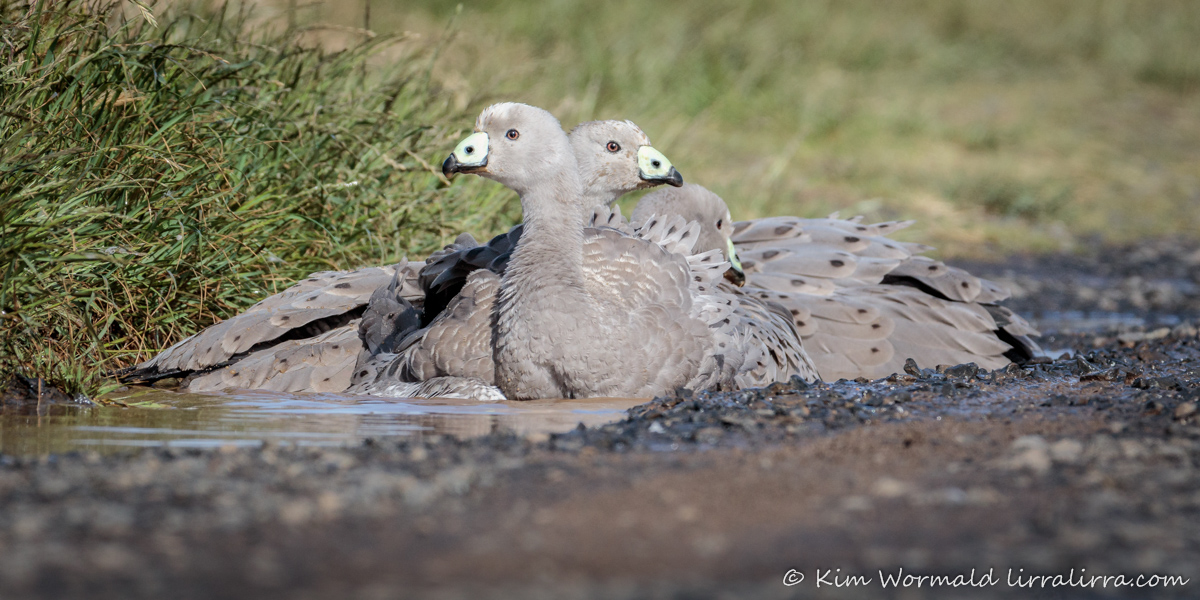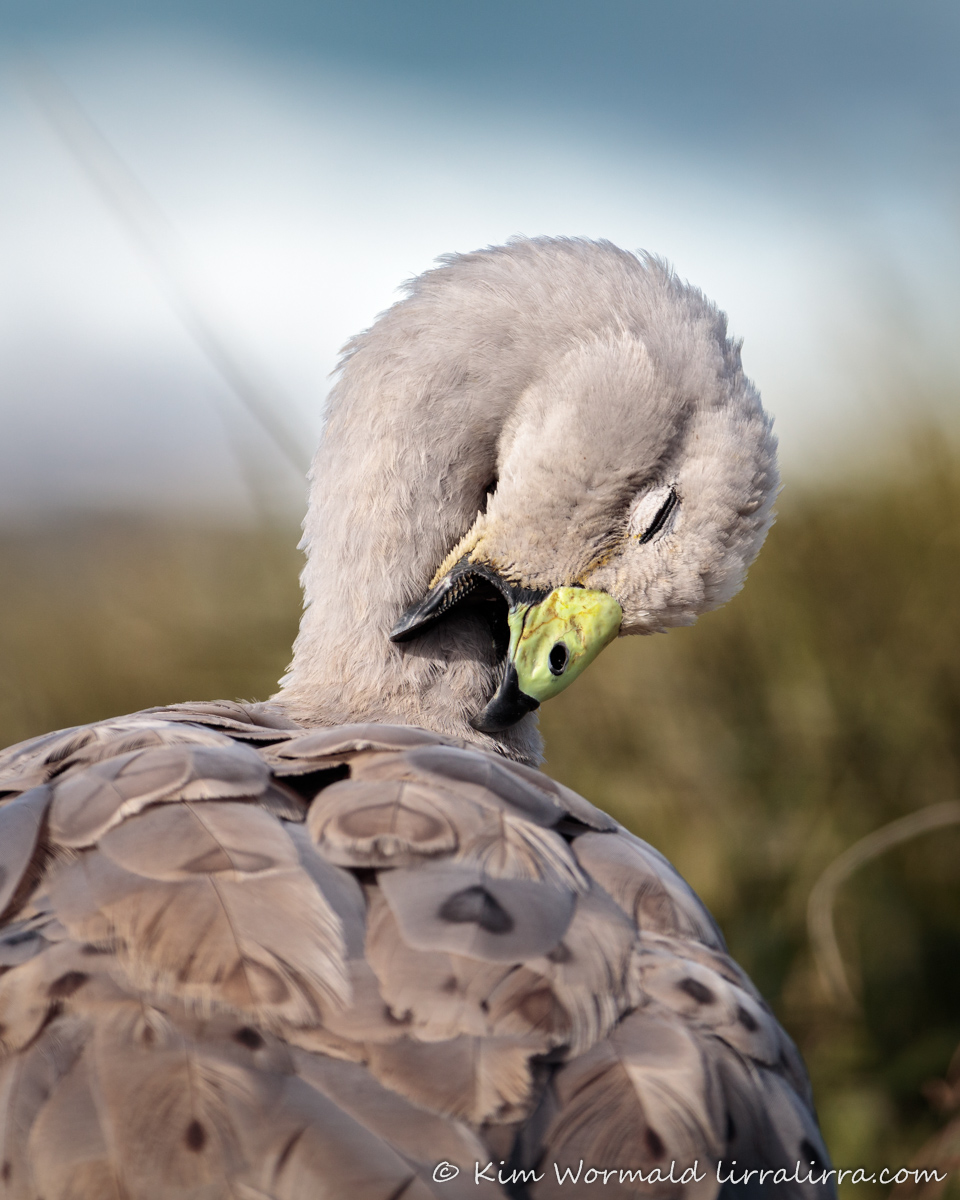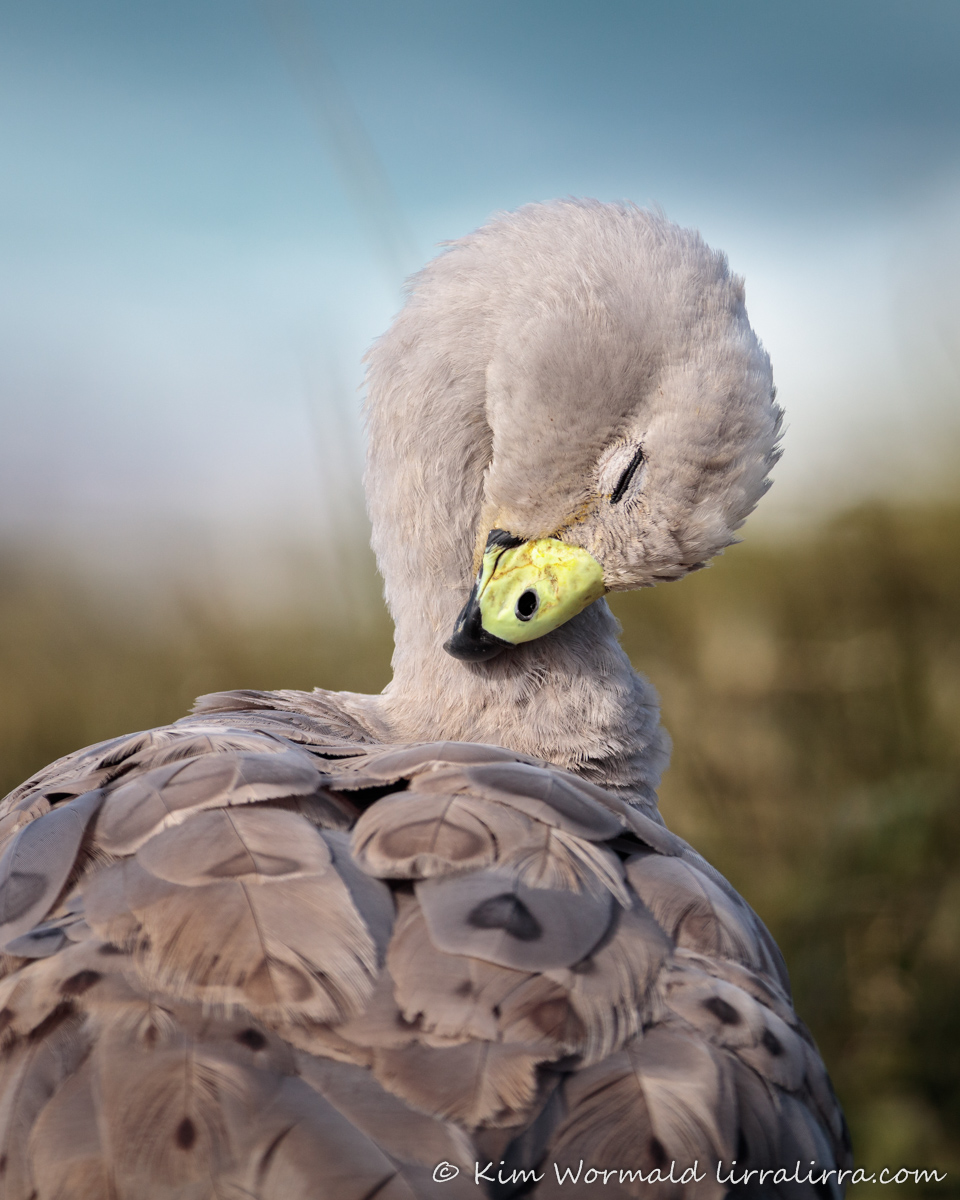On a recent trip to Phillip Island a friend and I were treated to the comical sight of a group of young Cape Barren Geese bathing in a shallow puddle.
Cape Barren Goose (Cereopsis novaehollandiae)
1/2000, f/8.0, ISO 1600
Cape Barren Goose (Cereopsis novaehollandiae)
1/1250, f/8.0, ISO 800
There are four birds in the image above, all spreading their feathers in the puddle. From observation I’ve noted that adult birds have red irises and juveniles have brown irises. I thought I’d do some research on this before publishing Bathing beauties and have been surprised to find all kinds of different information, including the suggestion that male birds have brown eyes. That was easy to check by referring to an earlier lirralirra post showing a pair of geese mating, which clearly shows that both adult birds have red eyes. So I’ll stick with my observations but am interested to hear if anyone has more information about this; I was particularly hoping to find out when their eyes become red. I’m guessing it would be at the end of their first year as most birds I see have lost their pale juvenile plumage and have red eyes, but it’d be good to know for sure.
A couple of years ago some of my Cape Barren Goose images were used as part of a post graduate research project, if all else fails I’ll see if the researcher studied anything to do with the colour of eyes as well as ceres.
Cape Barren Goose (Cereopsis novaehollandiae)
1/800, f/6.3, ISO 800
After bathing comes the careful preening to ensure their feathers are kept in pristine condition.
Cape Barren Goose (Cereopsis novaehollandiae)
1/800, f/6.3, ISO 800
I think the image above is particularly sweet, almost swan-like.
Cape Barren Geese breed on offshore islands in Tasmania and southern Australia where they can stay all year as they are able to drink salty and brackish water. These geese mate for life with the male predominantly building the nest and lining it with down, while the female incubates the eggs. It’s great that the species has made a comeback from their endangered status but they are still listed as rare in South Australia and vulnerable in Victoria and NSW. If you’re visiting an island where they live, please be extra careful on the roads as they often graze on the new shoots that come up when roadside edges have been mown.
Thank you to everyone who has given feedback about the current exhibition, it’s great to be sharing the beauty of birds (and a couple of other critters) in such an awesome venue. I’ve repeated brief details about the exhibition below.
Happy birding, Kim
~ thank you for visiting and commenting
~ if you would like to join the subscribers who receive a weekly email letting them know when lirralirra has been updated please use the ‘subscribe’ box above right
Fusion – nature through the lens:
Kim is an award winning ethical bird photographer, Greg is an image architect and Joy Phillips is a storyteller.
Where:
Mont de Lancey Historic Homestead, 71 Wellington Road, Wandin North 03 5964 2088
When:
Saturday 12 November to Sunday 11 December 2016
Open Wednesdays to Sundays, 10am – 4pm





These are such gorgeous birds and I love all these images! Unfortunately, Iike so much of our wildlife, they are not spared from recreational hunters :/
I’m glad you like the images. So many of those ‘recreational’ shooters are horribly indiscriminate, let’s keep hoping for a government that listens to the voters
Love that last image! How gorgeous.
I like that one too!
I always love to watch bathing birds. I don’t think there is any question that as well as the utility there is rather a lot of enjoyment. I doubt I will ever see Cape Barren Geese for myself – so megathanks. Again.
I’m sure you’re right about the bathing, I hope you do get to see one, they are quite magnificent.